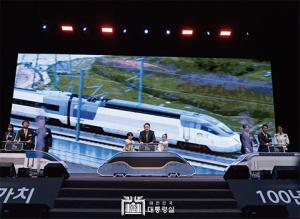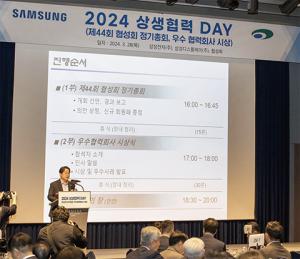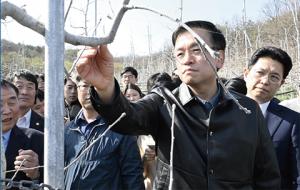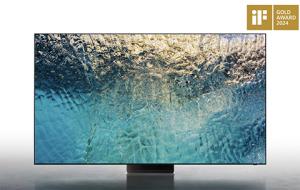 |
수천 번을 두드려 만들어내는 금속공예의 ‘名作’
방짜유기에 담긴 전통과 현대의 아름다움
방짜유기 이종덕 명인
‘명작(名作)’의 요건은 무엇일까. 우리는 단순히 값비싼 재료로 치장하고 고급스럽게 포장한다고 해서 그 물건을 명작이라고 부르진 않는다. 수천, 수만 시간의 땀과 노력 속에서 그 안에 예술혼이 담길 때, 시간이 흘러도 그 가치가 퇴색되지 않고 오히려 갈수록 품위를 더할 때, 그때서야 우리는 그 작품을 ‘명작’이라고 부른다. 1,300℃가 넘는 치솟는 화염 속에서 묵묵히 수천 번의 망치질을 거듭하며 명작을 만들어내고 있는 이가 있다. 바로 방짜유기장 이종덕 명인이다.
생명의 그릇, 유기
구리와 주석을 합금한 놋을 우리나라 특유의 담금질 기법으로 가공해 만든 금속 제품을 ‘유기’라 한다. 예로부터 왕실과 사대부가에서 대를 물려가며 쓰던 유기그릇은 은은한 광택이 품위 있고 고급스러우며, 견고하고 탁월한 보온·보냉 효과를 내는데다 음식에 조금이라도 독성이 있으면 검게 변하는 특성으로 ‘생명의 그릇’이라고도 불렸다.
우리나라 전통 유기 제작방법은 크게 세 가지로 분류된다. 불에 녹인 쇳물을 일정한 틀에 부어 만드는 주물유기, 놋쇠를 불에 달궈 망치질을 되풀이해 형태를 잡아가는 방짜유기, 주물 기술로 전두리를 오목하게 만들지 못할 때 부분적으로 달구어 오목한 형태로 만드는 기법인 반방짜유기가 있다. 그중에서도 방짜유기는 휘거나 잘 깨지지 않고, 변식이 잘 되지 않으며 쓸수록 윤기가 나 귀하게 쓰인 공예품이다. 방짜유기를 만들기 위해서는 먼저 78%의 구리와 22%의 주석을 1,300℃ 이상의 센 불에 녹인 뒤 망치질로 얇게 펴서 일정하게 잘라 여러 장을 겹쳐 우묵한 형태를 만든다. 그 다음 당기고 치기를 반복하며 늘리고 형태를 만드는 등 무려 12~14차례의 전통 수공 비법을 통해야 제대로 된 방짜유기가 탄생한다. 이렇게 만들어진 방짜 유기는 유기를 만드는 장인의 솜씨가 그대로 묻어나고, 성형할 때 두드린 울퉁불퉁한 메 자국은 수공품만의 자연스럽고 은은한 멋을 자아낸다.
이종덕 명인은 “특히 우리나라의 유기기술은 세계에서도 손꼽히고 있습니다. 일반적으로 구리 속에 주석이 용해되는 최대용량은 14%로, 이를 초과하면 성형이 불가능한 것으로 알려져 있습니다. 하지만 우리 선조들은 메질을 통해 재료의 강도와 탄성을 증가시키는 단조기술을 바탕으로 주석을 22%나 함유하고도 성형을 가능하도록 만들어 세계에서도 유래 없는 고유의 유기성형기술을 확립할 수 있었습니다”라고 설명했다.
유구한 전통의 전북 금속공예기술
우리 유기의 역사는 아주 오래전으로 거슬러 올라간다. 출토되고 있는 각종 청동기 유물에서 초기 유기기술의 흔적을 찾아볼 수 있다. 이후 철기시대에 접어들며 잠시 자취를 감췄던 우리 유기기술은 삼국시대에 접어들며 다시 발달하기 시작한다. 일본의 ‘일본서기’에 보면 백제가 제련 및 세공기술을 일본에 전해주었음이 기록되어 있으며, 무령왕릉의 왕비 머리 부분에서 출초된 금동제 대발은 청동으로 제작한 발우이다. 또한 ‘삼국사기’의 기록에 의하면 신라에는 경덕왕 이전부터 철유전이라는 기관을 두고 철과 유석을 관장하였던 것을 알 수 있다. 삼국과 통일신라를 거치며 재료와 기술면에서 획기적인 발전을 이룩한 유기기술은 고려시대 각종 불상이나 불교용구, 생활용기 등의 다양한 기물 제작에 활용된다. 왕족과 귀족은 방자기법으로 제작한 얇고 질긴 청동그릇을 식기로 사용하기도 했다고 한다.
조선시대에 접어들며 체계화된 유기기술은 놋쇠로 만든 생활용구를 제작하는 데에 폭넓게 사용된다. 식기를 비롯해 향로, 소반, 대야, 악기 등 다양한 제품이 놋쇠로 만들어졌다. 특히 임금님 수라상에 사용될 만큼 무독, 무취, 무공해 금속제품인 유기는 음식을 담는 최상의 식기로 그 가치를 인정받았다. 조선의 ‘반상기’는 예법과 법절을 갖춘 사대부의 식생활 문화를 보여주는 것으로, 유기로 된 반상기를 정성스럽게 사용하고 관리하는 것이 아녀자의 가장 중요한 의무로 여겨질 정도로 우리 생활문화에서 중요한 부분을 차지해왔다.
그러나 유기는 1960년대에 들어와 푸대접을 받기 시작한다. 무겁고 변색이 심해 관리가 힘들다는 이유에서 스테인리스나 플라스틱 같은 화학제품에 밀려 생산과 유통이 거의 중단되고 자취를 감추게 된다. 특히 6.25 전쟁을 거치며 수많은 공방시설이 파괴되고, 전통기술의 전승이 끊어지며 우리의 유기기술은 그 명맥을 잃는 듯 했다.
이종덕 명인은 “전주지역은 6.25 전만 해도 엄청난 규모의 유기공장이 있었던 지역으로 방짜기술의 중심지였습니다. 경국대전의 기록에 의하면 전주와 남원에 유기장들을 관리하는 공장이 있었다고 하며, 이는 양반과 사대부가 많이 거주하던 전주와 남원 지역의 방짜유기 수요가 상당했음을 보여줍니다. 또한 징과 꽹과리는 고도의 방짜기술을 요하는 악기로 소리의 고장인 전북에 방짜 제작공방이 있었음을 나타냅니다”라고 설명했다. 실제로 전주를 중심으로 익산의 이리유기점, 김제 금산에 원평유기점 등이 있어 주발과 대접, 식기는 물론 징, 꽹과리 등의 악기를 생산하던 방짜 공장이 있었다고 전해진다.
철저한 전통방식 고집하며 외길을 걷다
오랜 전통과 역사, 그리고 빛나는 기술을 가졌지만 방짜유기는 오랜 시간과 노력을 필요로 하기에 그 명맥이 끊어지다시피 하고 있었다. 1979년, 청동유기제품을 만드는 회사에서 근무했던 것을 계기로 이 길에 접어든 이 명인은 사라져가는 우리 전통문화를 되살리고, 방짜유기의 아름다움과 효용을 사람들에게 알리기 위해 연구에 매진하게 된다.
그는 경기도 의왕시에서 기술 연마를 거듭하며 자신만의 예술세계를 넓혀가기 시작한다. 이후 정읍으로 터전을 옮기면서 전북의 강한 전통공예를 발판삼아 6년 전 김제 원평에 개인작업장을, 익산에 공동작업장을 만들게 됐다. 묵묵히 방짜유기 외길을 걸어온 그는 2006년 제31회 전승공예대전 본상을 비롯해, 2007년 청와대 대통령 전용식기 제작, 2010년엔 전북공예품 경진대회 금상을 수상하며 2011년 전북무형문화재 제43호에 지정되기에 이른다.
이 명인은 순도가 가장 좋은 구리와 주석을 조달청으로부터 매입하고, 14단계에 걸친 수작업 공정으로 명품 방짜유기를 제작하고 있다. 징이나 꽹과리도 전통방식의 제작을 고집해 타 공방의 악기보다 고가임에도 불구하고 시장 점유율 80% 이상을 이어가고 있다. 국립국악원, 김덕수 사물놀이, 진쇠 등 국내 유명팀의 악기 제작은 대부분 그의 몫이다. 이 명인은 “악기는 외부형태와 각 부위 두께 조절, 인장 탄력상태가 음색을 좌우합니다. 그만큼 제작공정에서 그것을 조절하는 기능을 보유해야 제대로 된 소리가 나오는 악기를 제작할 수 있습니다”라고 밝혔다.
현대성 갖춘 방짜유기, 이제 세계를 무대로
최근 방짜유기는 건강을 중시하는 트렌드를 따라 재평가를 받고 있다. 유기가 농약성분을 감지하고, 식중독균을 없애며, 소화를 돕고 혈압을 안정시키는 등 다양한 질병 예방 효과가 있다는 것이 알려지면서 많은 일반인들이 관심을 갖게 된 것이다. 이 명인은 “방짜유기는 주물과 달리 기공이 없어 변색이 잘 안되며, 좋은 이온과 미네랄 성분을 함유·방출하기 때문에 우리 몸의 노화요소인 활성화 산소를 없애줄 뿐만 아니라 보온·보냉 효과 덕분에 음식의 맛을 오래 지켜주고, 오래 보관하기 위한 저장기로써도 탁월합니다”라고 장점을 설명했다.
이 같은 유기는 그 기능면에서도 뛰어나지만, 현대적인 트렌드에 맞는 고급스러운 빛깔과 디자인이 재조명되면서 젊은 층 사이에서도 인기를 끌고 있다. 최근에는 한정식 집뿐 아니라 캐주얼한 비빔밥이나 냉면 전문점, 심지어 팥빙수를 판매하는 디저트 숍에서도 유기를 만날 수 있다. 전통 기술에 현대적인 디자인을 접목한 다양한 유기 제품은 최근 혼수 예단으로도 애용된다.
이미 유기에 대한 이론적 공부를 위해 중앙대학교 예술대학원 금속공예과에 진학하여 석사학위를 취득한 국내 유일의 ‘석사 방짜유기장이기도 한 이 명인은 최근에는 전통기술은 유지하되, 그것을 현대적으로 접목시키기 위한 연구와 작업에 몰두하고 있다. 그는 “방짜유기는 국가적 차원에서 중요한 기술로 인정받고 있습니다. 하지만 수작업 위주의 공정과 대량생산이 힘들다는 점 때문에 갈수록 기술을 전수받겠다는 이가 줄어들고 있는 형편입니다”라고 설명했다. 이 명인은 이러한 위기를 극복하고 우리 방짜유기 기술이 세계로 나아가기 위해서는 수작업 공정과 기계화 공정의 적절한 조화가 필요하다고 강조했다. 전통적인 단조기술은 유지하되, 수작업이 불필요한 단계에서는 현대적인 기술을 도입함으로써 제작 가격을 합리적인 선에서 유지하고 대량생산 체제를 갖추는 것이 전통공예시장에서의 판로 개척을 위한 길이라는 생각이다.
달구어진 쇠를 한 번에 메질할 수 있는 시간은 불과 30~50초. 화염의 뜨거운 열기 속에서 잠시도 한 눈을 팔수 없는 집중의 시간을 거쳐야 탄생하는 생명의 그릇 ‘방짜유기’. 갈수록 빛을 더하는 은은한 광택과 자태는 단순한 그릇이라기보다는 예술품에 가깝다. 오늘도 1,300도의 용해로와 화덕을 오가며 단단한 놋쇠를 두드려 황금빛 그릇을 만들어내고 있는 이종덕 명인의 손끝에서 탄생할 또 하나의 명작을 기다려 본다.
Masterpiece that is made through thousands of hammering
Lee Jeong-duk, Master craftsman of Bangjja Yugi (forged brass pots)
Brass pots, the daily goods of life
Brass is made by combing copper and tin through tempering and brass pots are the daily goods made with brass. Brass pots were used from generation to generation from a long time ago. They are shiny, noble, luxurious, strong and has thermal & cold reserving effect. It is also called as the daily goods of life as they can change the color when poison is detected in the food. The methods of making the traditional Korean brass pots divide into three parts. Firstly, casting brass pots made by pouring molten metal into a cast. Secondly, hammered brass pots made by hammering repeatedly the heated brass. Thirdly, half hammered brass pots to make a concave form by heating a necessary part. The middle one among three is stronger, consistent and the more you use it the more it shines. To make hammered brass pots, you need to melt 78% of copper and 22% of tin at more than 1,300℃ fire.
Then you hammer it to be equally thin and flat and overlay each sheet to be hollow. Then you repeat pulling and hammering through 12 to 14 traditional methods to make a final product. Thus made brass pots contain the maker's skills and the dented parts by hammering conjures up natural and delicate charms. Lee says "Korea's brass pots technology is world level. Generally, the maximum capacity of tin in copper to be melted is 14% and we can't make a shape if it exceeds more than the amount. But based on forging technology that increases strength and elasticity, our ancestors made it possible with 22% of tin in copper and established a unique organic forging technology."
Introducing traditional Jeonbuk metalwork technology developed
through time and age
Korea has a long history of making brass pots. We can find the trace at the Bronze Age relics. It was shortly disappeared in the Iron Age but reappeared in the Three Kingdom Era. Nihon Shoki records that forging technology was transferred to Japan from Baekje and the gold & bronze Daebal found in the queen's head part of Royal Tomb of King Muryeong was Balwoo made of bronze.
According to The History Book of the Three Kingdoms, Silla established an organization called Chulyoojeon to make iron and flowstone even before the King Gyeongdeok of Silla. The materials and technology of brass pot making was highly developed through The Three Kingdom Era and The Unified Silla and the technology was used to produce Buddhist goods and daily goods in the Koryo Dynasty. It is said that royal families and aristocrats used bronze bowls made by hammering methods. When the time reached to the Chosun Dynasty, the forging technology became more systematic and people made a variety range of daily goods with the technology covering from incense burner, small portable dining table, basin to musical instrument.
Brass pots were recognised as the best ones around that time as they did not contain any harmful substance. Women taking care of a set of tableware was even regarded as their most important duty in the past. But brass pots experienced hardships in the 1960s. With their heavy and constant changes of color, brass pots were slowly taking a backseat to stainless and plastic. Especailly, many workshops were destroyed during the Korean War and it seemed that we lost part of our traditional techniques and culture. Lee says "Jeonju was the center of hammering technology and there were numerous large scale forging factories before the Korean War. Gyeongguk-Daejeon also records aforementioned facts which means that the industry was prospered in the ares where many nobilities and aristocrats once lived. Jing (gong) and kkwaenggwari (small gong) actually require high tech hammering techniques and it's so natural that Jeonju is the home of the traditional Korean musical instruments." There actually were factories in Iksan (called Yuki) and Gimje (called Wonpyeong Yuki) that produced bowls, plates as well as gongs.
Walking a single path while keeping the tradition
Despite its long history, tradition and high technology, the method seemed disappeared due to its time and effort required. Lee put himself in the field in 1979 when he stared working for a related company and has been devoting himself to liven up the tradition. He improved his skill extensively in Uiwang City. He then moved to Jeongeup City and opened a personal workshop in Wonpyong, Gimje and a communal workshop in Iksan 6 years ago. Lee received numerous prizes including The 31st Handcraft Competition (participation prize) in 2006, the Blue House Jeonbuk Handcraft Competition (golden prize) in 2011 and made presidential tableware in 2007 as well as appointed as Jeonbuk Intangible Cultural Asset (No.43) in 2011.
Lee purchases the best copper and tin in purity from Public Procurement Service to produce masterpieces through 14 stages of manual process. Lee's hand-made gongs are also taking 80% of the market share despite its expensive price. For this reason, Lee makes most of traditional instruments for renowned traditional Korean music bands such as Kim Duk-su Samulnoli (traditional percussion quartet) and Jinshai. Lee says "the thickness and elasticity decide the quality of the tone of the gongs. This means that I must have the skill to adjust the characteristics of the gongs to create right sounds."
Promoting modernized traditional Korean brass pots to the world
Brass pots are currently in the spotlight as it is known to sense poison, remove food poisoning bacteria, help digestion and stabilize blood pressure as well as preventing various diseases. Lee says "brass pots have no gas pockets so there's consistency in color, contain and release good ion and minerals to remove active oxygen, keeps good taste of food due to its thermal & cold reservation effect and can save food for a long time." Also, they are made with sophisticated design and color to attract young consumers. You can see brass pots not only in traditional Korean restaurants but also in many restaurants and snack bars down town today.
They are even used for wedding gifts now. Lee is the first person who obtained a master''s degree from Chung-Ang University's Metalwork Department. Lee says "brass pot making technology is recognized as important national technique. The problem is that because it should be made by hand, there are few people who love to learn the skills." To solve this problem, Lee suggests that we need to combine manual process with automatic process. The idea is to maintain the traditional methods while applying automatic process to the part where manual work is not necessary so that it can be mass produced and provided at an affordable price. You have to hammer the heated metal in 30 to 50 seconds and concentrate on the whole process to make perfect shiny and noble brass pots and for this reason brass pots can be called as work of art.
안정희 기자 honesty5835@naver.com







